
Original | Odaily Planet Daily ( @OdailyChina )
Author | Ethan ( @ethanzhang_web3 )
Financial reporting season is the most honest time for the capital market.
When Bitcoin and Ethereum are no longer just "investment targets to consider building positions" but enter corporate financial statements in the form of assets, they are not just codes and consensus, but also become part of the valuation model - even one of the most sensitive variables in market capitalization elasticity.
In the second quarter of 2025, a group of listed companies with strong ties to crypto assets delivered very different "mid-term report cards": some achieved geometric expansion of net profits by relying on the increase in BTC, some used ETH staking income to reverse core business losses, and some embedded "indirect exposure" to crypto assets in the form of ETFs.
Odaily selected six companies for in-depth research - DJT, Strategy, Marathon, Coinbase, BitMine Immersion, and SharpLink Gaming - they are distributed in different industries, markets, and strategic stages, but they all show a trend: when BTC is a valuation amplifier and ETH is a cash flow engine, the balance sheets of companies are undergoing a paradigm shift.
Bitcoin in the report: Faith is still the main theme, but variables are increasing
DJT: Using BTC to write stories and using options to amplify valuations
No one knows better than DJT (Trump Media & Technology Group) how to include Bitcoin in financial reports and amplify it into a valuation engine.
In the second quarter of 2025, DJT disclosed holdings of approximately $2 billion in Bitcoin assets, comprised of approximately $1.2 billion in spot positions and approximately $800 million in BTC call options. This structured portfolio is essentially a "leveraged digital asset bet"—not only capturing price increases but also embedding the nonlinear elasticity of market capitalization growth.
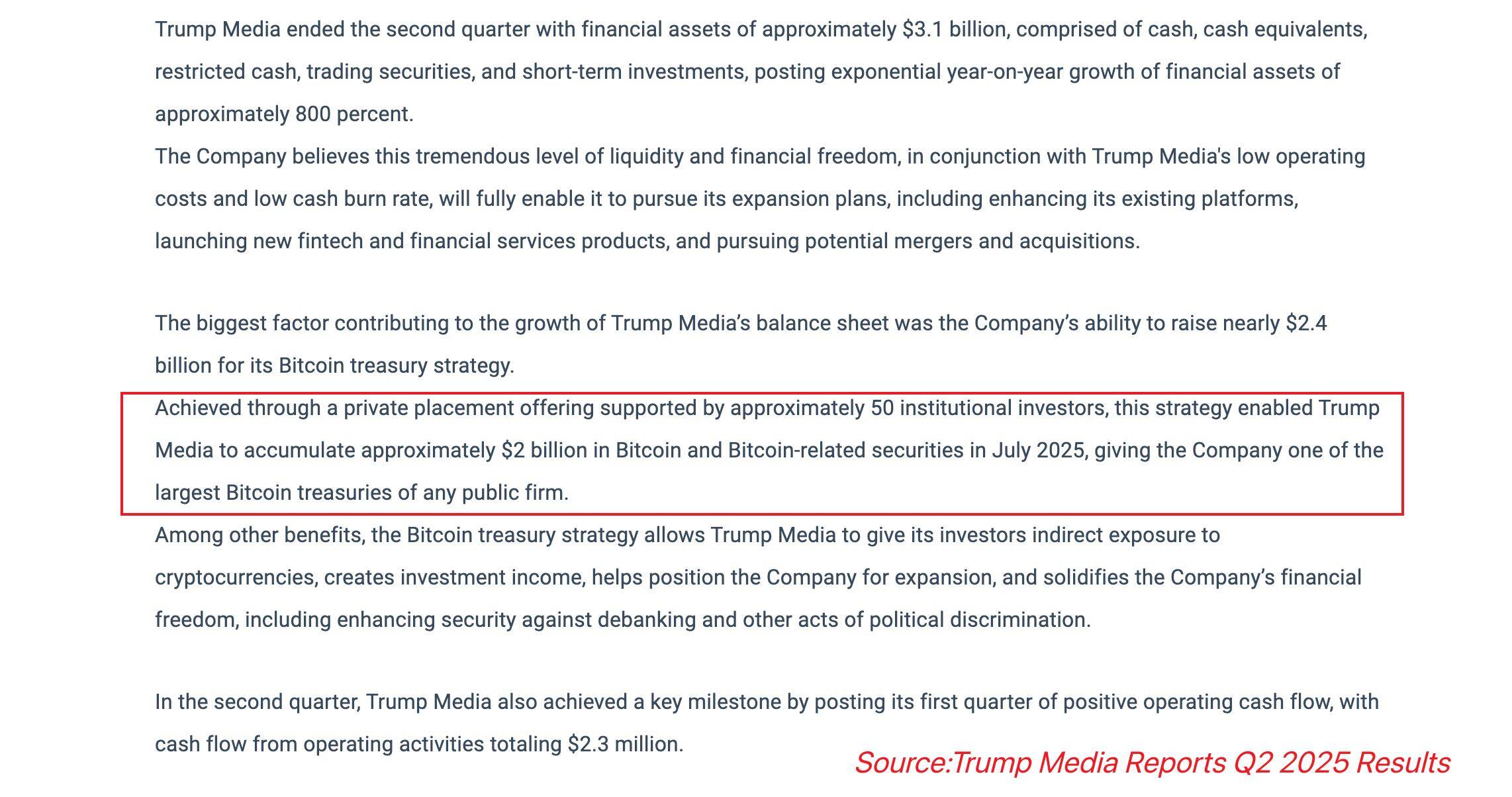
Its EPS jumped from -$0.86 in the same period last year to $5.72, and its net profit exceeded $800 million, almost entirely driven by unrealized valuation gains on BTC and changes in the market value of option exposure.
Unlike Strategy's "long-term allocation", DJT's BTC strategy is more like a radical financial script experiment: leveraging market expectations of BTC's rise, writing into a valuation model that can tell a story , hedging the risks of an unformed business, and creating a "narrative spillover" on the financial side.
At the same time, the DJT report also mentioned that it will continue to deploy the Truth+ reward mechanism and crypto wallet embedded tokens in the future, and simultaneously submit registration applications for multiple Truth Social brand ETFs, trying to lock in broader liquidity through the compound path of "content platform + financial products".
Strategy (MSTR): The First Defender of BTC
Unlike DJT’s high volatility and high elasticity path, Strategy (formerly MicroStrategy) remains the paradigm builder for BTC’s financial reporting.
As of Q2 2025, Strategy's Bitcoin holdings reached 628,791, with a total investment cost of approximately $46.07 billion and an average purchase price of $73,277. Strategy added 88,109 Bitcoins during the quarter. Due to the company's fair value measurement model , its second-quarter revenue reached $14.03 billion, of which $14 billion, or over 99%, came from unrealized gains on BTC.
The traditional software business contributed only US$114.5 million, accounting for less than 1%, and has almost been marginalized.
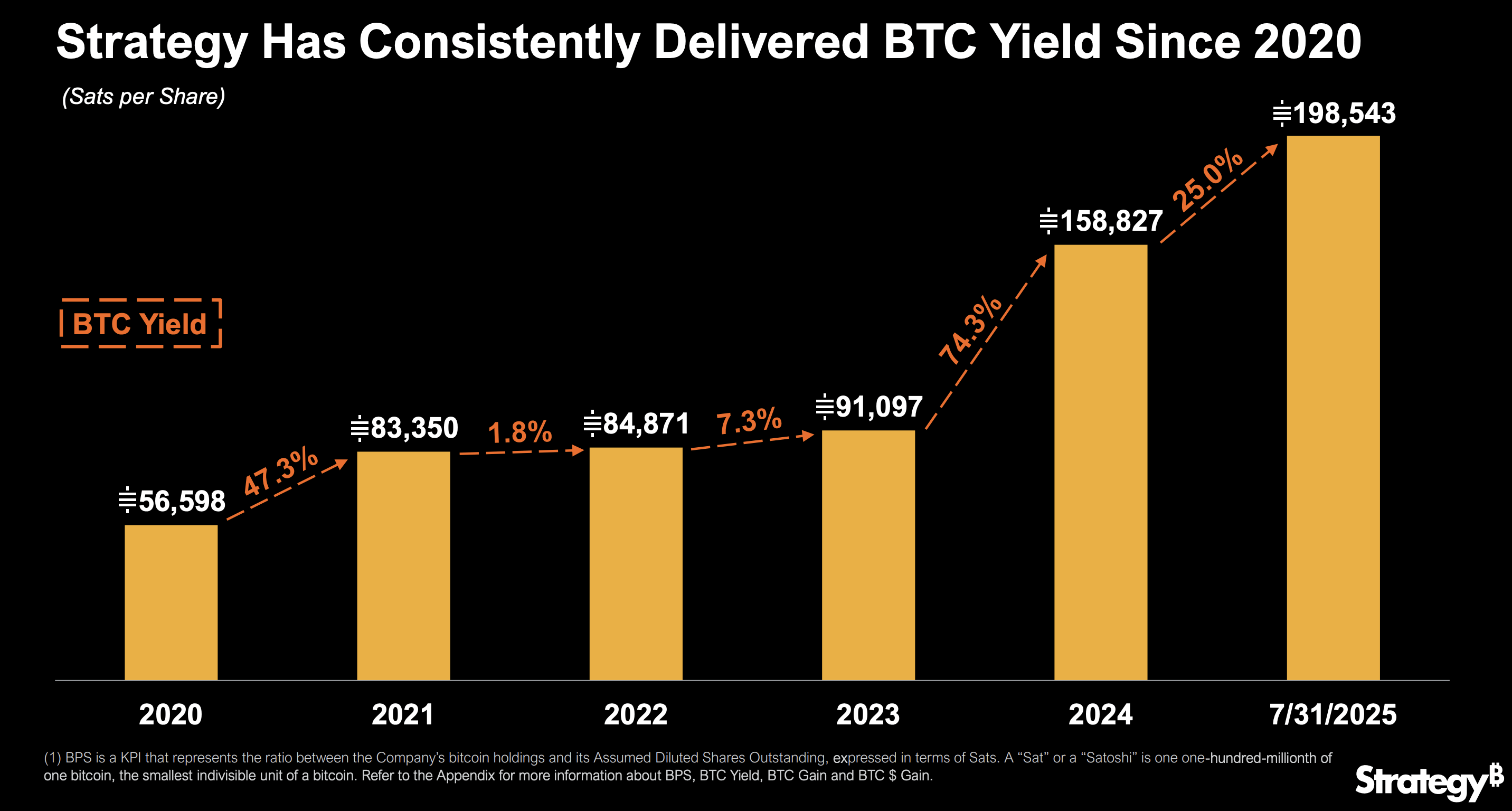
Its Q2 net profit reached $10.02 billion, turning a profit year-on-year, with EPS reaching $32.6, and full-year EPS expected to exceed $80. At the same time, the company announced it would raise another $4.2 billion through the issuance of STRC perpetual preferred shares to continue increasing its Bitcoin holdings, demonstrating a typical expansion path of "increasing capital and increasing faith."
Strategy's model is to write Bitcoin into the main axis of the report during the financialization process, transform it into a " digital asset reserve platform ", and highly bind BTC with the US stock valuation system.
Marathon: The financial reporting boundaries of BTC miners
As one of the largest mining companies in North America, Marathon produced 2,121 BTC in Q2 2025, a 69% year-on-year increase, contributing $153 million in revenue. Its Bitcoin inventory reached 17,200, valued at over $2 billion.
Unlike DJT and Strategy, Marathon's BTC is more of an "operational output," reflected as operating income rather than asset allocation. It follows a typical "output-oriented" logic in financial reports. It cannot actively affect the balance sheet, but can only passively record the benefits and costs brought by BTC.
Q2 net profit reached $219 million, and EBITDA reached $495 million, reflecting its high operating leverage amidst the BTC bull market. However, facing structural factors such as the surge in global computing power, volatile electricity prices, and the halving of block rewards after the halving, its financial reporting flexibility may face some compression in the future.
Marathon is a typical "computing power premium" company - when BTC goes up, it creates high profits; when BTC falls back, it will face the challenge of the break-even point.
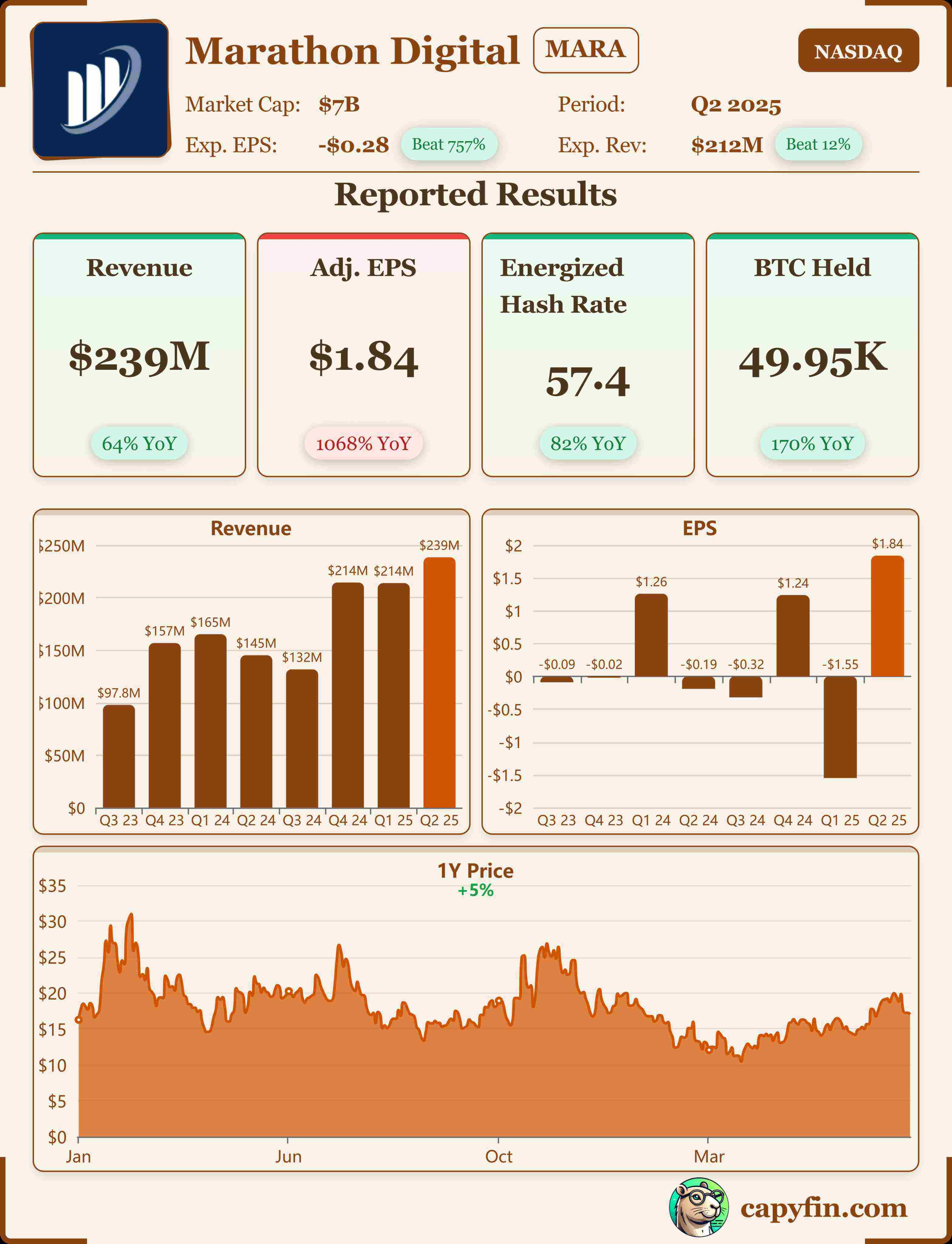
Staking Enterprises: Is ETH the “Cash Flow Engine” in Financial Reports?
Unlike Bitcoin, which relies primarily on "valuation amplification," Ethereum, with its inherent staking revenue potential , is becoming a tool for some companies exploring "financial cash flow construction." This structure is becoming possible, especially with US financial accounting standards allowing staking income to be classified as recurring revenue.
Although there are still not many listed companies that directly hold ETH, a few "pioneers" have demonstrated the new role that ETH may play in corporate balance sheets.
Coinbase: Revenue exceeds transaction fees for the first time, and ETH staking is generating measurable returns under the dual-holding model.
Coinbase, one of the world's largest cryptocurrency exchanges, holds both BTC and ETH on its balance sheet. As of June 30, 2025:
- Coinbase holds approximately 137,300 ETH in its own addresses;
- Through Coinbase Cloud and Custody services, the total amount of ETH staked in custody and proxy is approximately 2.6 million , accounting for approximately 14% of the total stake in the network;
- In the second quarter, staking service revenue was approximately US$191 million , of which more than 65% came from ETH staking, approximately US$124 million .
This part constitutes the core source of its Subscription & Services Revenue and belongs to recurring revenue. Coinbase officially included ETH staking in the recurring revenue column in its Q2 report.
In Q2 2025, Coinbase achieved total revenue of US$1.497 billion, of which staking service revenue reached US$191 million (accounting for 12.8%), of which ETH staking contributed approximately US$124 million, an annualized growth of over 70%.
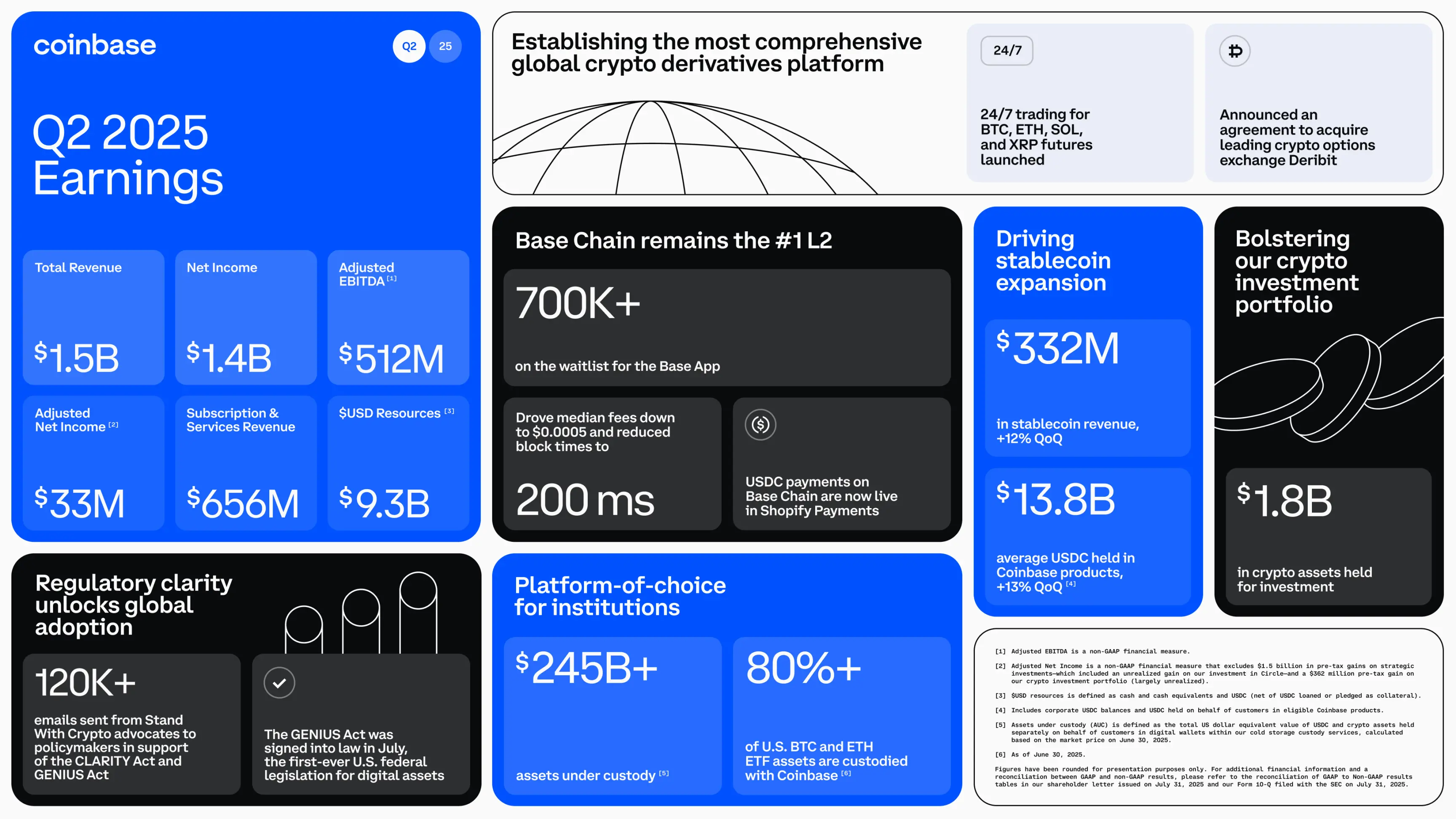
In stark contrast to the 40% decline in trading volume and the 39% month-over-month drop in transaction fees, staking revenue has become the core of Coinbase's counter-cyclical hedging structure . The official financial report also disclosed for the first time the detailed breakdown of staking revenue, including user return payments, platform operation revenue sharing, and revenue from self-operated nodes.
It is worth noting that Coinbase is currently the only listed company that systematically discloses ETH staking income, and its model has industry paradigm guiding value.
BitMine Immersion Technologies: ETH reserves first, unofficial financial report model is radical
As of now (August 2025), BitMine Immersion has not disclosed its Q2 quarterly report to the SEC. Its ETH reserve and revenue data mainly come from media reports and on-chain address analysis. It does not yet have a basis for incorporating into financial analysis models and currently only has trend observation value.
According to multiple cross-reports by Business Insider, AInvest, and Cointelegraph at the end of July, BitMine has become the listed company with the largest ETH reserves . It claims to have completed the establishment of a position of 625,000 ETH in Q2, with a market value of more than US$2 billion , of which more than 90% has entered the pledge status, with an annualized yield of between 3.5% and 4.2%.
Media outlets speculate that its unrealized income from ETH staking (staking rewards) in Q2 reached $32 million to $41 million . However, as the company has yet to release its full financial statements, we cannot confirm whether this income is included in its financial statements or how it is accounted for (e.g., in "other income" or as asset appreciation).
Despite this, BitMine's stock price rose by more than 700% in Q2, and its market capitalization exceeded US$6.5 billion. It is widely regarded as a pioneer in the direction of ETH financial reporting, similar to MicroStrategy's position in BTC financial reporting.
SharpLink Gaming: The second largest ETH reserve company, but Q2 financial report is not disclosed
According to publicly available ETH reserve tracking data, SharpLink holds approximately 480,031 ETH , ranking second only to BitMine. The company has invested over 95% of its ETH in staking pools (including Rocket Pool, Lido, and its own nodes), creating a structure similar to an "on-chain yield trust."
According to its Q1 financial report, ETH staking income has covered the costs of its core advertising platform business for the first time, and it has recorded its first quarterly positive operating profit. If ETH prices and yields remain stable in Q2, its total income from ETH staking is estimated to be between $20 million and $30 million .
It is worth noting that SharpLink conducted two strategic equity financings in the first half of 2025, introducing an on-chain fund structure as collateral, and its ETH reserves were also used as "on-chain proof" for these financings, indicating that the company is actively exploring the use of ETH staking as a "financial credit tool."
However, SharpLink Gaming (NASDAQ: SBET) has not yet released its 2025 Q2 financial report . Its ETH reserves and income structure come from the 2025 Q1 quarterly report and media tracking data. Therefore, it is only used as a reference for the financial report structure sample and does not constitute an investment data basis.
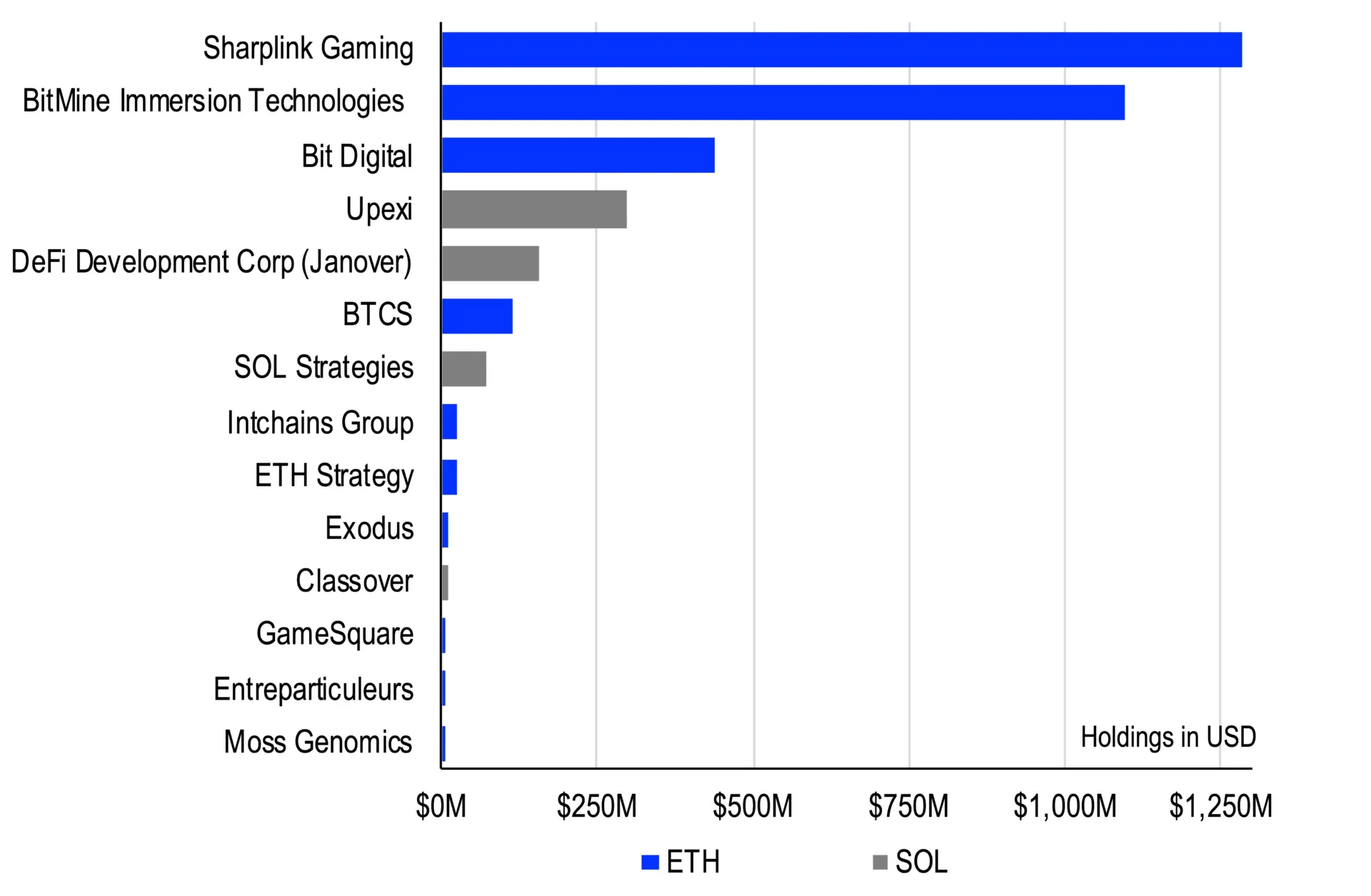
Conclusion
From DJT to SharpLink, these companies collectively demonstrate a shifting trend: crypto assets are no longer simply speculative tools or hedging instruments, but are gradually becoming integrated into companies' financial engines and reporting structure variables. Bitcoin brings nonlinear valuation amplification to financial statements, while Ethereum builds stable cash flow through staking.
Although it is still in the early stages of financialization and compliance challenges and valuation fluctuations still exist, the Q2 performance of these six companies indicates a possible direction - Web 3 assets are becoming the "next grammar" of Web 2 financial reports.





